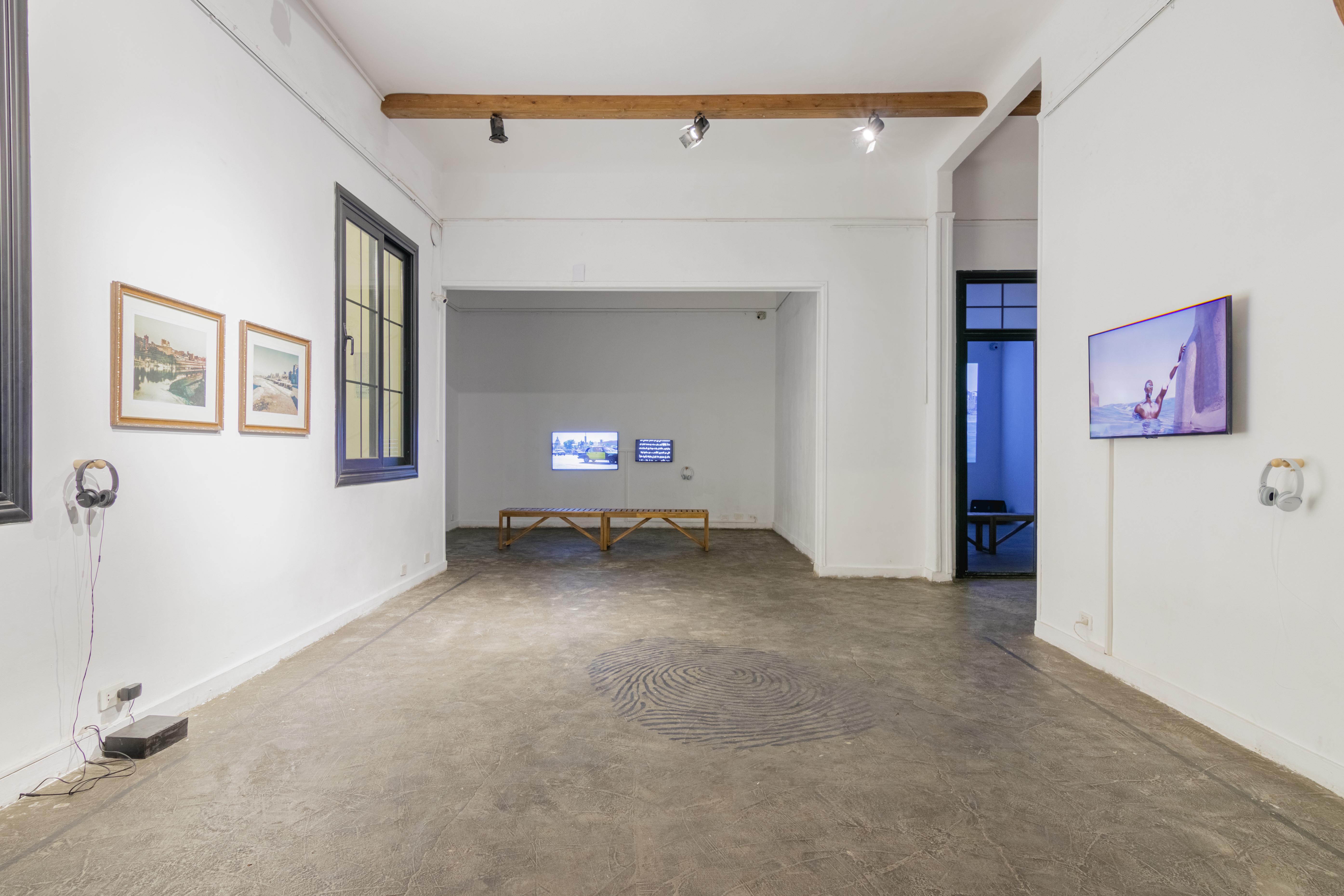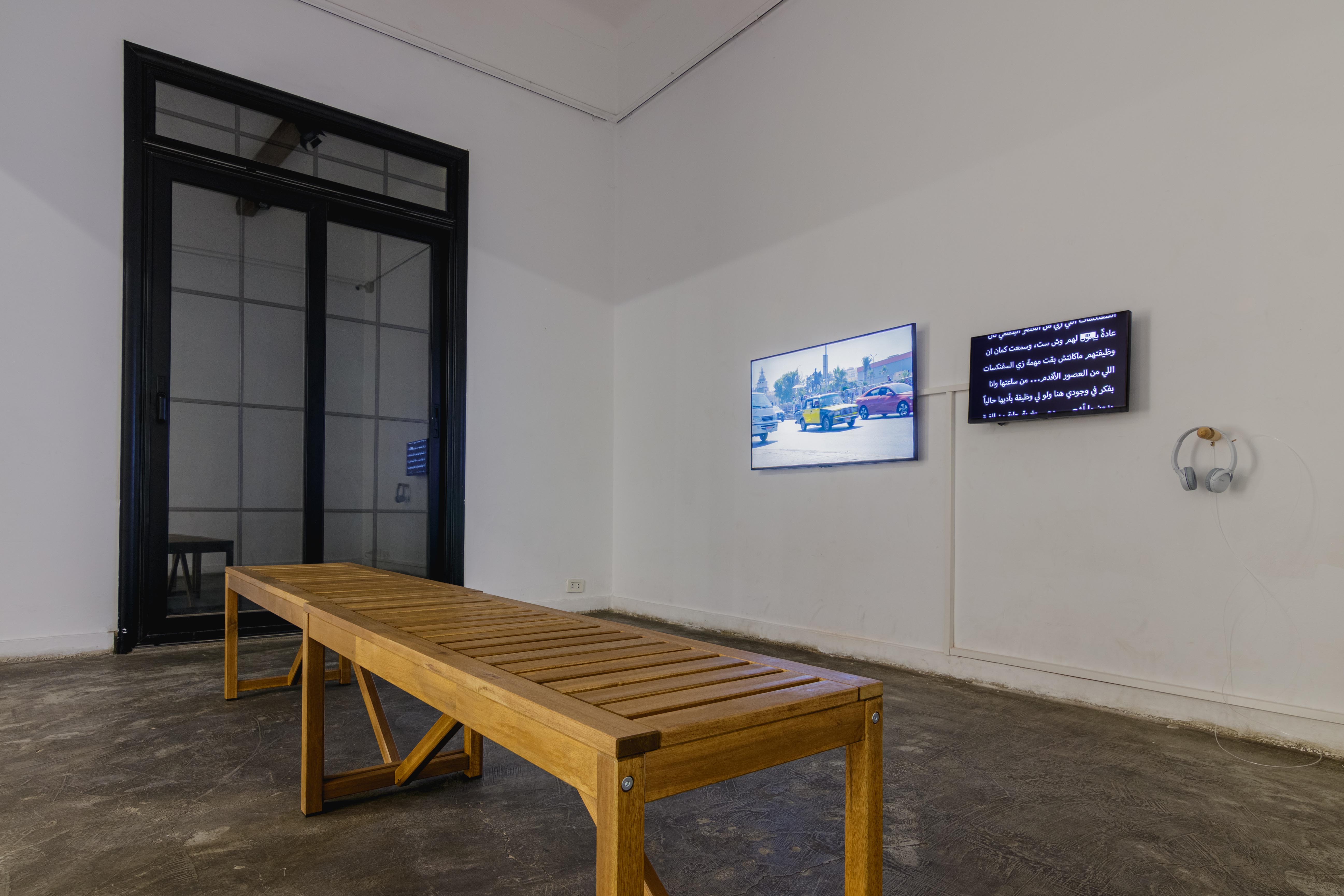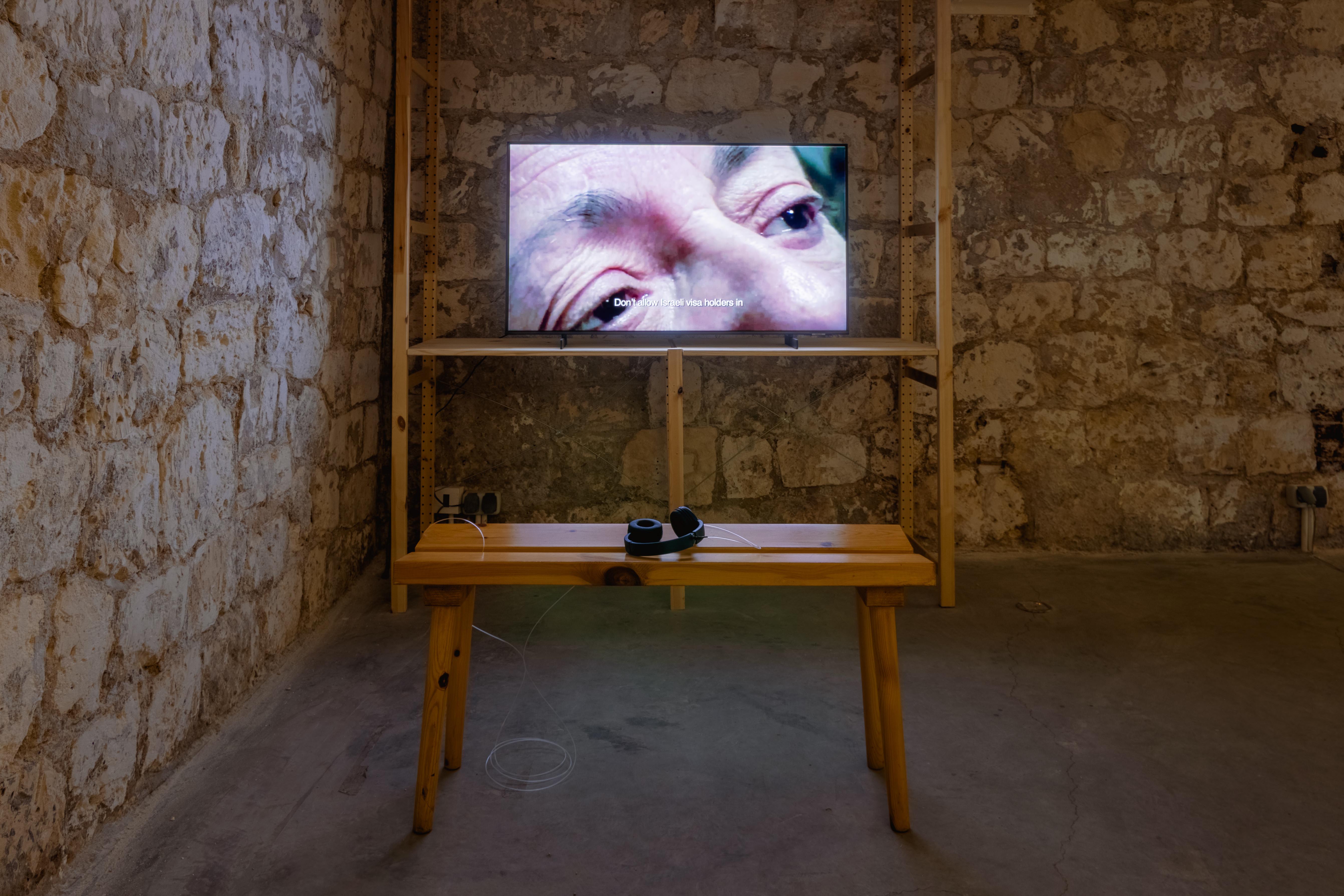Review #9: In Lieu of A Prism
Abdelrahman Hussein
“In Lieu of A Prism” is a group show featuring the works of Ahmed Saleh, Akoo-o, Asmaa Jama, Chiara Cartuccia, Elena Biserna, Fag Tips (Virgil B/G Taylor), George Moraitis, Islam Shabana, Latent Community, Lodovica Guarnieri, Mahmoud El Safadi, Maria Ilia Kastrouni, Maria Sideri, Mark Lotfy, Mohamed Adel Dessouki, Monai De Paula Antunes, Natassa Dourida, Neja Tomšič, Nina Kurtela, Omnia Sabry, Onur Çimen, Post Disaster, Sam Karpienia, Sara Fakhry Ismail, Stella Ioannidou, Yasmine Hussein, Zeynep Kaserci, Zoé Le Voyer. The exhibition is curated by Marwa Benhalim, and was accompanied by a public program of talks, walking tours, live performances and conferences from June 1st until June 8th, 2023, at B’sarya for Arts, Institut français d’Egypte à Alexandrie, and 6 Bab Sharq.
I have always felt that the clash between artworks and concepts of cities, histories, heritage and identity are tantamount to suicide. While engaging with highly structured histories and contexts, the artist bears a constant burden of searching for and finding the proper approach, providing him/her with a more critical and broader space for expression. The artist tends to get absorbed in self-reflection before engaging in his/her artistic practice. These complexities are exacerbated when thinking about Alexandria (also the name of the artistic residency), as it is a city in continuous struggle of identities itself.
The exhibition “In Lieu of A Prism” was curated Marwa Ben Halim, including the works of the participants of two residencies, “Caravan Residency Program: Thinking with Alexandria” and “School of Sonic Memory,” along with other artists invited to take part in the show. These residencies and artistic findings are part of the project “Alexandria: (Re)activating Common Urban Imaginaries”, funded by the European Union's Creative Europe programme.

The exhibition is spread throughout three different venues in the city centre, with distances of five-minute walks between them. The city is a key and recurring word in the exhibition, whether present or absent, in the artworks on display. By navigating the three venues, the intention of exploring the city becomes obvious, but soon after, the wandering transforms from being the most obvious daily practice into an artistic practice. It is as if I was watching the city from the window of a caravan, where the city centre turns into an open exhibition hall; the streets turn into a scene to stroll through, and the stalls and shops turn into structures in space, as if I was about to touch the impact of gentrification. This is all whilst I have a few stops, view the exhibition halls, pick up a flyer, watch a video compilation, and listen to audio installations and so on...
During those pauses, I noticed the themes and common threads that linked the works, like geography, ruins, and belonging. Through this guided movement, some questions about the identity of the city, ownership, citizenship and hegemony were raised to find the answer to one question; who is dominant here? The Italian-style facades of the buildings, the Chinese manufactured automobiles, the American sports T-shirts worn by passers-by, and the slogans on the exhibition poster became fragmented like puzzle pieces. The raised questions encouraged me to see the exhibition as an elaborate artistic space for negotiating another option for the city.
The exhibition was designed for the visitor to begin the tour from 6 Bab Sharq, the first exhibition space, where he/she finds a sound installation upon entering, emphasising the feeling of having entered the space. The presence of these compound acoustic structures continues at the Institut Français, the third exhibition space, and less explicitly in B’sarya, the second exhibition space, as a result of the sounds emanating from video works and films using loudspeakers. This exploitation of sound created a sense of space: a space of negotiation within the city, to reflect on and think about the city.
At 6 Bab Sharq, a work-in-progress by Mark Lotfy caught my attention. At first glance, however, it seemed distant and out of touch from the exhibition; the city, Alexandria, and Alexander the Great are not usually of interest to the film world, but there is another, more abstract connection that makes it relavant to the show. The film engages with the concept of wandering and rituals—sometimes religious, sometimes social, and at other times the filmmaking rituals themselves. Mark explores this imaginary hazy space, resulting from the impact of religious rituals on the lives of a Coptic family, and builds an intriguing relationship between the sacred and the comic. At the beginning of the film, we see a parallel montage between family members infatuated with wearing masks, not only ceremonially, but as a family practice, making the mask a family emblem. Their goal is not to hide behind them, but rather to embody the masks and create a kinship between their human souls and other souls, like the “Dogon” people of West/Central Africa and the “Anishinaabe” people of North America. The film follows, in a non-linear manner, a family member's pilgrimage to the occupied Palestinian territories. Through it we discover how that sacred religious journey turns into a political journey punctuated by comic moments to highlight its realism. By using the aesthetics of amateur family videos and recordings, the frames create a strange sense of presence of another being, perhaps behind the camera, or more so behind this physical world altogether.
At B’sarya, my curiosity was piqued by Sara Fakhry Ismail’s artwork, a two-channel video where the artist explores—from a feminist environmental perspective—the lives of things. She pays particular attention to the domination of human exploitation, and focuses on the spirituality inherent in inanimate objects and their agency, to delve into the relationship between the maker and the made. In her video, we see the statue of “Umm al-Hawl", settling next to the statue of Alexander the Great on Abu Qir Street in Alexandria, attempting to think about herself, her presence and position. “Umm al-Hawl", whose origin is attributed to a natural stone, was first transposed from its desert environment to be commemorated into a statue, in the hopes of acquiring many signs and meanings next to several other statues, as well as representing and referring to something other than its stoneself. “Umm al-Hawl" was then thrown into the Mediterranean Sea to be exposed to marine erosion factors, resulting in a huge loss of its features and almost reverting back to its initial state as a stone. It was eventually recovered again and placed next to the statue of Alexander the Great and presented as a monument. Sara questions the concept of the agency of things, as she presents things as equal actors and partners of man in a larger, decentralised world, where man is part of the total formation. Whilst watching the film, I was engrossed in trying to understand archeology as a field and discipline of colonial origin that creates two main issues. First is constructing a specific historical narrative of things, or in other words constructing a narrative of civilization and progress in its western modernist concept. The second issue—which I delve into later—is the production of heritage, and the supply of the modern state and archaeological institutions with the materials necessary to consolidate the valuation system, which in turn lists one narrative and one history. The latter is the most problematic aspect when thinking about Alexandria, in my opinion.
In the same metaphorical space, characterised by a more contemplative nature moving from micro to macro very smoothly, Omnia Sabry's work on plants can be seen in the third exhibition space at the Institut Français. The work consists of three pictures of plants surrounded by text. The text prompts the viewer to observe the plants in the photos, their sensitivity to light, and their strategies of change and transition from one phase to another.

“In a contracting space for negotiation and improvisation, I demand another contraction, how do we estimate the losses of a new phase—or how do we discern what was previously destroyed at the expense of what was rewritten?
The hidden work of trees is manifested in their root system, its intricacy, its networks of connections—how many times can they endure being cut down and starting all over again? Which amongst them will withstand a complete cut? Whilst remaining fully alive, waiting for the right conditions to start another cycle yet again?”
The hidden work of trees is manifested in their root system, its intricacy, its networks of connections—how many times can they endure being cut down and starting all over again? Which amongst them will withstand a complete cut? Whilst remaining fully alive, waiting for the right conditions to start another cycle yet again?”
—An excerpt from Omnia Sabry’s text
The exhibition “In Lieu of A Prism” was an attempt to reflect on the politics of hegemony emanating from the city, and here I do not only mean the city of Alexandria: Alexandria is a dead city in any case (and as we say in Arabic: beating the dead is unfair) and attempts to revive it are only attempts to revive the heritage. I instead refer to the most abstract concept of the city; as attempts of searching for other spaces for resistance and negotiation, and discovering different fantasies and other histories relate to what is microscopic, abstract, and sometimes inhuman through these artistic spaces. The cultural infrastructure that dominates them can help us understand ourselves as individuals, not by providing agency to the “other” but instead through reflection and deconstruction of our understanding as individuals of all that is “other.








When I left the exhibition, some questions remained in my head, for which I am not looking to answer but rather to try to imagine and think about the future: When will we be liberated from urbanism so that the non-urban proposition is not utopian and pragmatic? Can we see another life and another phase of our future as individuals in the death of the city? How do we terminate the heritage to liberate it from its sanctity; can we see the statue of Alexander and Umm al-Hawl as mere rubble and stones without losing value? And can the ownership of history be transferred from institutions to individuals?

Abdelrahman Hussein (b. 1998) is a multidisciplinary artist and a filmmaker whose works examine the notion of subjective globalization, and explore what is shared and common in the public and popular in diverse sociocultural contexts.